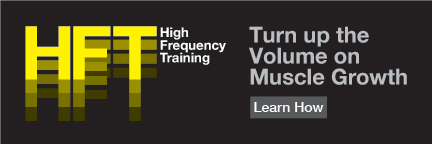 Last month I gave a presentation in Las Vegas for the National Strength and Conditioning Association (NSCA). My topic focused on ways to increase motor unit recruitment.
Last month I gave a presentation in Las Vegas for the National Strength and Conditioning Association (NSCA). My topic focused on ways to increase motor unit recruitment.
It’s a subject I’ve written extensively about over the years, and in those articles and books I’ve placed a large emphasis on increasing acceleration during the concentric (muscle shortening) phase to enhance the number of motor units you recruit.
However, there’s much more to motor unit recruitment than just lifting faster. I’ll use the Turkish Get-up (TGU) as an example – an exercise that beautifully challenges full-body strength.
Assuming you’ve tried the TGU, you know it’s difficult to perform explosively. Indeed, to maintain perfect form you need to move with a slow, deliberate pace and concentrate on joint stability as you transition between each phase of the movement. This is especially true as you work to, and beyond, a 32 kilogram kettlebell.
Could you increase motor unit recruitment if you tried to perform the TGU more explosively? Possibly, but it’s not worth the effort. Certain strength exercises that require full-body strength in complex movement patterns are better performed slowly, even if you could move faster. Pavel refers to the TGU as the ultimate slow grind strength exercise. I completely agree, and that’s why it’s part of all my athletes training programs.
Now, you might not consider a TGU to be a massive muscle builder. But a heavy deadlift certainly is, and it’s a perfect example of a slow grind move that quickly builds plenty of muscle.
And sometimes, no movement at all is best for building muscle. I’m referring here to isometric holds. It’s clear that gymnasts who perform the rings event have incredible upper body muscle development – better than any other natural athlete on earth, if you ask me. Yet, they virtually never move explosively. In fact, a rings routine consists of isometric holds paired with slow, deliberate transition moves in between.
I’ve spent a considerable amount of time hanging from rings over the last few years. So I can state with utmost certainty that it takes more muscle and strength to perform a perfect muscle-up slowly. An explosive muscle-up relies heavily on momentum. As momentum goes up, muscle tension and motor unit recruitment go down.
Now, if we take momentum out of the equation and focus on traditional strength exercises with free weights and cables, it’s usually better to perform the concentric phase as explosively as possible. This philosophy forms the foundation of the programs in my book, Huge in a Hurry.
However, as you incorporate less traditional moves into your programs – exercises such as the TGU with a kettlebell or an iron cross hold on the rings – it’s important to understand that faster isn’t always better. In those cases, developing the highest levels of muscle tension possible is the goal. And that usually requires you to slow your pace.
So for complete muscle and strength development in athletes, I incorporate three categories of movements into their programs: explosive, slow grind, and high-tension isometrics. Here are a few of my favorite examples from each category:
Explosive: kettlebell swing, one-arm row, push press, and hang power snatch.
Slow grind: TGU, heavy deadlift, Nordic hamstring, and one-arm push-up.
High-tension isometrics: iron cross, maltese, handstand from rings, and one-arm hang from a pull-up bar or rings.
Stay Focused,
CW

